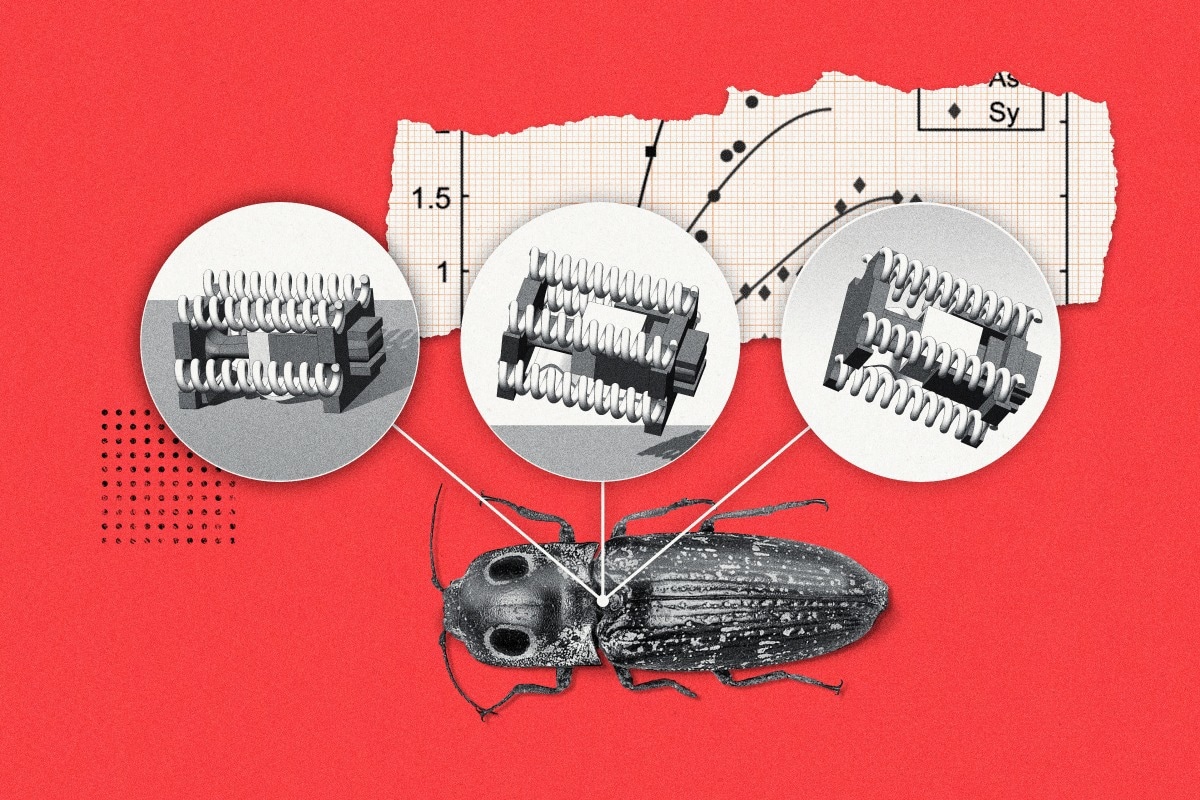Significant progress has been made by researchers in coming up with insect-sized jumping robots. This newly-developed robot exhibits the potential to perform tasks in the small spaces often found in agricultural, mechanical, and search-and-rescue settings.

Mechanical science and engineering professor Sameh Tawfick led a new study introducing click beetle-sized robots small enough to fit into tight spaces, powerful enough to maneuver over obstacles and fast enough to match an insect’s rapid escape time. Image Credit: Michael Vincent.
Under the guidance of Mechanical Science and Engineering Professor Sameh Tawfick, a new study performed has illustrated a whole range of click-beetle-sized robots. They are strong enough to maneuver over hurdles, pretty quick to match the rapid escape time of an insect, and quite small to suit tight spaces.
The study findings are reported in the journal Proceedings of the National Academy of Sciences.
At the University of Illinois Urbana-Champaign and Princeton University, scientists have learned click-beetle anatomy, mechanics, and evolution over the last ten years.
A 2020 study discovered the fact that snap buckling—the quick release of elastic energy—of a coiled muscle inside a click beetle’s thorax can be triggered to enable them to drive themselves in the air at heights several times their body length as a way of righting themselves if reversed onto their backs.
One of the grand challenges of small-scale robotics is finding a design that is small, yet powerful enough to move around obstacles or quickly escape dangerous settings.
Sameh Tawfick, Mechanical Science and Engineering Professor, University of Illinois Urbana-Champaign
In the new study performed, tiny coiled actuators were utilized by Tawfick and his research group. These are analogous to animal muscles that pull on a beam-shaped mechanism, which results in the storage of elastic energy until it is impulsively released and amplified, thereby propelling the robots in the upward direction.
This process, called a dynamic buckling cascade, is simple compared to the anatomy of a click beetle. However, simple is good in this case because it allows us to work and fabricate parts at this small scale.
Sameh Tawfick, Professor, Mechanical Science and Engineering, University of Illinois Urbana-Champaign
Directed by mathematical models and biological evolution, four device variations were built and tested by the research group, landing on two configurations that could be successful in jumping without manual intervention.
Moving forward, we do not have a set approach on the exact design of the next generation of these robots, but this study plants a seed in the evolution of this technology – a process similar to biologic evolution.
Sameh Tawfick, Professor, Mechanical Science and Engineering, University of Illinois Urbana-Champaign
The team foresees these robots gaining access to tight spaces to help execute maintenance on large machines like jet engines and turbines, for instance by taking pictures to identify concerns.
Tawfick stated, “We also imagine insect-scale robots being useful in modern agriculture. Scientists and farmers currently use drones and rovers to monitor crops, but sometimes researchers need a sensor to touch a plant or to capture a photograph of a very small-scale feature. Insect-scale robots can do that.”
Scientists from the University of Birmingham, UK, Oxford University, and the University of Texas at Dallas also took part in this study.
This study was financially supported by the Defense Advanced Research Projects Agency, the Toyota Research Institute North America, the National Science Foundation, and The Royal Society.
Click beetle-inspired jumping robot developed at the University of Illinois Urbana-Champaign.
Video Credit: University of Illinois Urbana-Champaign
Journal Reference
Wang, Y., et al. (2023) Insect-scale jumping robots enabled by a dynamic buckling cascade. Proceedings of the National Academy of Science. https://doi.org/10.1073/pnas.2210651120.